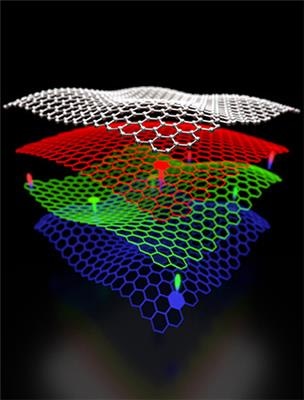Nonlinear Effects in Graphene Membranes Show promise for New Telecommunication Technology
Next-generation ICT can now be developed using the nonlinear effects present in graphene membranes.
Similar to drums in usual drumsets, nanoscale graphene membranes have a unique set of oscillating modes that relate to particular oscillation frequencies. An external voltage can be applied to excite these oscillating modes.
Researchers have demonstrated that a circular graphene membrane can be played like a drumset if a suitable external force is applied. The research, undertaken by researchers from Cornell University and the University of Jyväskylä, has been reported in the Nature Nanotechnology journal. The work was funded by the Academy of Finland.
The main idea of this research revolves around the fact that when the system is excited at a specific frequency (by playing a certain note) the behavior of the graphene membrane can be controlled at a different frequency. This in turn suppresses or increases the vibrations based on definite excitation conditions.
In principle, the researchers were able to attain the results when they applied the graphene membrane with an external constant and used it like a ‘tuning peg’. This enabled the team to regulate the tension of the membrane and alter the coupling that was required to regulate a single oscillation mode by stimulating the other. The unique mechanical properties of graphene, particularly its stiffness, made it possible to establish coupling between different modes.
This latest research shows promise for the use of graphene mechanical resonators in the field of telecommunication, for example, as frequency mixers. Additionally, these resonators, when cooled down to temperatures near absolute zero, could play a significant role in detecting even the mildest quantum signals as well as in the domain of advanced telecommunication technologies, where counterintuitive properties arising at quantum the scale can pave the way for inherently secure data exchange.

Pictorial view of the system: the graphene membrane (white) oscillates at three different frequencies. By exciting the central frequency mode (green) it is possible to transfer energy from the fundamental mode (blue) to the highest frequency mode (red), hence effectively cooling the former. Conversely, driving the highest mode (red) will lead to a transfer of energy to the central and fundamental mode (green and blue respectively), resulting in the amplification of the latter. (Credits: Image courtesy of R. De Alba.)




